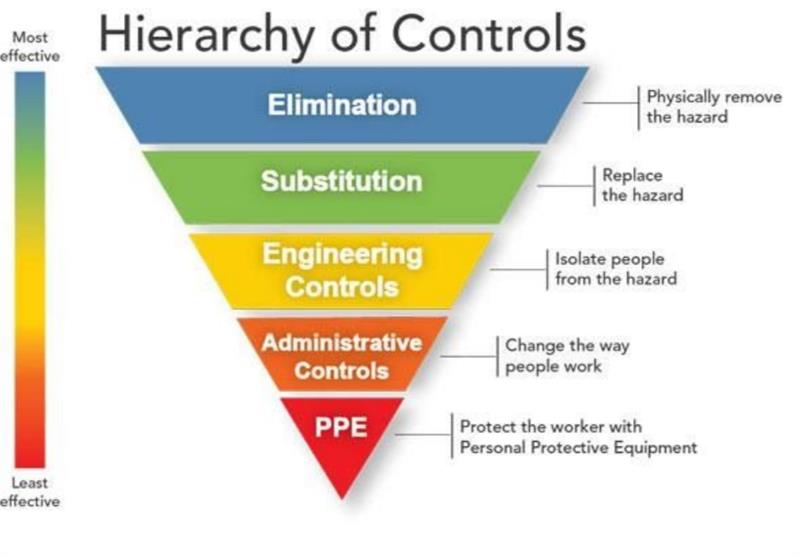On 10 May, the Prime Minister unveiled the government’s plans to gradually bring the UK out of lockdown. For the manufacturing sector, the key takeaway from this address was the slight change of emphasis: those who cannot work from home should be actively encouraged to go to work.
With homeworking virtually impossible for the majority of manufacturing roles, some businesses may have already made the decision to stay open, implementing social distancing measures to keep risk to a minimum. However, those that were running on a reduced workforce, or who had closed altogether while they awaited further instruction, will now be bracing themselves for a return to the workplace.
So, in a hands-on, factory-floor environment, what does it take to keep people safe?
As a health and safety practitioner, I have worked with businesses in various stages of operation during this pandemic. However, whatever your circumstances in the past two months, the time has come for all employers to review their status and develop a comprehensive plan for managing COVID-19 in order to protect your business and, most importantly, your employees.
This may feel like a colossal task. My advice would be to split risk management into two key areas: a focus on the workplace and then on your employees. The two are interlinked, and without managing both, you could fail to manage COVID-19 appropriately.

Before considering workplace controls, it is important to understand the principles of risk control, namely the “Hierarchy of Control”. Health and safety legislation requires employers to apply control measures in the order they appear within this hierarchy, from most to least effective. Only once you have exhausted the control measures required at the top levels because they are not reasonably practicable can you proceed to the next level.
The most effective control, of course, is to eliminate the hazard. As we move down the hierarchy, control measures become less effective as they are dependent on human behaviour. These less-effective controls involve administrative arrangements, such as introducing safe systems of work and providing PPE.
So, what does this mean, and how does it relate to your environment?
Elimination: Unlike removing a faulty piece of equipment, we cannot ‘eliminate’ the virus. However, employers can eliminate the risk of infection to individual workers by allowing them to work remotely wherever possible. Ask yourself: is it necessary to have office, sales and support employees on-site to keep producing?
Substitution: Shift partners, or reducing production staff, would reduce the risk of infection but could introduce other hazards such as staff working alone or a reduction in your first aid cover. Be mindful of how your changes may introduce other hazards.
Engineering controls: Consider installing physical barriers to reduce contact with others, changing the flow of pedestrians around the workplace, and introducing a one-way system. Are there certain production lines that could be adjusted to help with social distancing?
Administrative controls: Next, look at controls which rely more heavily on employees, such as reducing face-to-face work by having people work side-by-side instead. Stagger breaks so there are less people in one place at a time, and encourage good workplace hygiene through posters and regular communication.
PPE: Currently, the guidance states that outside of clinical/care settings, PPE should not be used to manage the risk of exposure to COVID-19 in the workplace, unless risk assessment indicates a “very high” risk of exposure. Face masks have been suggested but are not mandatory and should not be used a substitute for the controls listed above, which should be considered first.
All of your COVID-19 controls must be documented via a risk assessment. For activities where social distancing cannot be achieved, really challenge yourself as to whether that activity needs to continue for your business to operate.
What next?
So, you’ve adjusted your workplace, kept some employees home, re-organised production lines, devised new ways of working, and documented it all. However, the effectiveness of these measures will rely on employers working with their staff to ensure plans are properly executed and maintained.
Remember, this is a collaborative effort – never under estimate the power of collective buy-in from your employees. Not only will staff need to understand the new norm, but their insight could prove invaluable in deciding on and implementing adjustments.
You will need to communicate your new way of working to your employees, before they return if possible and using a variety of methods, such as emails, posters or toolbox talks. Try to keep the message clear and simple and, if it is necessary to deliver your plans in person, do so in a well-ventilated room and keep audience numbers low.
Above all, be understanding. Your workforce will be amongst the first people given the green light return to work, which will naturally create a great deal of anxiety. Keep in mind that people will have varied attitudes towards health and safety, and COVID-19 is no different. As such, educating and support employees through this period is vital if you are to stay on the same page, and ultimately stay safe.
Ellis Whittam is supporting manufacturing businesses’ return to work plans through helpful guides, checklists and risk assessments available for free via its Coronavirus Advice Hub.










